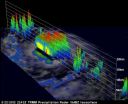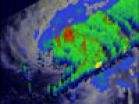(Press-News.org) After years of reducing their contact with pharmaceutical sales representatives, physicians now risk an unintended consequence: Doctors who rarely meet with pharmaceutical sales representatives — or who do not meet with them — are much slower to drop medicines with the Food and Drug Administration's "black box" warnings and to adopt first-in-class therapies.
According to a study published May 21 in The Journal of Clinical Hypertension, doctors whose access to pharmaceutical sales representatives is limited can take more than four times longer to change prescriptions based on new information than their peers who have more frequent contact. This longer response time holds true whether the physicians are responding to "positive news" related to an innovative therapy or "negative news" related to a newly discovered medicine risk.
George Chressanthis, professor of healthcare management and marketing and acting director for the Center for Healthcare Research and Management at Temple University's Fox School of Business, led the study in collaboration with ZS Associates, a global sales and marketing consulting firm with a very deep presence in the health care industry.
"This study analyzed for the first time — and on a large scale — what happens to physicians' prescription decisions when you decrease the access that pharmaceutical sales reps have to doctors," Chressanthis said. "We saw that increasing access restrictions affect physician decision-making in ways not anticipated by those at health care systems or large group practices who created these policies."
Chressanthis, his research team and ZS consultants began to measure the behavior of primary care physicians and specialists in 2008 when Chressanthis was at AstraZeneca Pharmaceuticals LP. They drew from ZS' annual AccessMonitor™ report, which since 2006 has tracked how frequently 300,000 physicians and other prescribers meet with pharmaceutical sales reps. According to AccessMonitor™, the number of doctors willing to see reps has declined about 20 percent since 2008. In 2010, about 11 percent of American physicians had "severe" or "no-see" restrictions on rep access, while 34 percent had "some" restrictions.
The study measured prescription activity and behavior by primary care physicians and specialists from 2006-2008 as it related to the following three major product events:
The October 2006 launch of a first-in-class drug to treat Type 2 diabetes (sitagliptin) (physician sample size: 65,088);
the August 2007 issue of a black box warning (i.e., the FDA's most serious medication warning) for a drug (rosiglitazone) used to treat Type 2 diabetes (physician sample size: 58,647); and,
the January 2008 release of a negative outcome associated with a therapy that combined a cholesterol-lowering drug (simvastatin) and another medicine (ezetimbe) to treat dyslipidemia (physician sample size: 72,114).
In the case of sitagliptin, physicians with a "very low" level of sales rep access took up to 4.6 times longer to introduce the new drug to patients than physicians who employed a "medium" level of access. For the black box warning, physicians with "very low" access were up to four times slower to reduce their use of this treatment than physicians with "low" access. In the clinical trial involving the negative outcomes of a lipid therapy prescription, physicians who limited sales rep access showed "significantly less" response in changing their patients' prescriptions than did physicians in less restrictive offices.
ZS managing principal Pratap Khedkar, co-author of the study, said the research demonstrated that most physicians should seek to balance their information sources.
"Though health care professionals work hard to minimize distractions and maximize the time they spend with patients, it's clear that sales rep access restrictions imposed by well-meaning physicians and group practice leaders can result in serious information gaps," Khedkar said. "Even though pharmaceutical sales representatives are not the only source of information, they do help physicians stay current on therapy developments. These findings should be carefully considered by those who set policy — whether it's at the physician group practice level or on the national stage."
The study also showed primary care physicians rely more heavily on sales reps for drug information than do specialists. "When primary care physicians reduce or eliminate contact with these reps, it impairs their ability to stay current and affects their prescription behavior," Khedkar said. "Because specialists concentrate in a narrow field, they can stay current by other means, including conferences, online forums, podcasts and academic journals. Thus, the updates they receive from reps have less impact on their prescribing abilities."
Chressanthis provides these final notes about the importance of this study. "Our study affirms simple intuition that when physicians have to make decisions involving complex issues with less than complete information available to them, and where the consequence of a wrong decision is significant as seen often in healthcare, unintended consequences are likely to appear," he said. "Policies that promote physician ignorance of new medical information resulting from access limits runs counter to protecting patient health."
INFORMATION:
Beside Chressanthis and Khedkar, the report authors also include Nitin Jain, ZS principal; Prashant Poddar, ZS consultant; and Michael Seiders, formerly Director of Strategic Public Policy Planning at AstraZeneca. Lead author Chressanthis was employed at AstraZeneca from 2000-2009. He still retains stock grants in AstraZeneca. The research was funded by AstraZeneca Pharmaceuticals LP.
The full article is available at http://onlinelibrary.wiley.com/doi/10.1111/j.1751-7176.2012.00651.x/full
END
Tropical Storm Bud is dropping heavy rainfall, and appears to be intensifying. NASA's Tropical Rainfall Measuring Mission (TRMM) satellite has been monitoring rainfall within the storm, and has watched it become heavier over the last day - a sign the storm is intensifying.
The TRMM satellite had an excellent view of tropical storm Bud on May 22, 2012 at 2243 UTC 6:43 p.m. EDT/2:43 p.m. PDT). TRMM's Microwave Imager (TMI) and Precipitation Radar (PR) data shows that Bud contained bands of very heavy rainfall near the center of circulation. TRMM revealed that some of these ...
Two NASA satellites have provided infrared and rainfall data that has shown Tropical Storm Sanvu continues to intensify as it heads toward Iwo To, Japan. NASA's Tropical Rainfall Measuring Mission (TRMM) satellite has scanned rainfall rates, and NASA's Aqua satellite has provided a look at cloud temperatures which indicates where the strongest thunderstorms and heaviest rainfall is occurring.
The TRMM satellite saw the intensifying storm on May 22, 2012 at 1535 UTC when wind speeds had reached to over 45 knots (~52 mph). Data from TRMM's Microwave Imager (TMI) and Precipitation ...
This week has seen some of the hottest weather of the year all over Scotland and it is expected to get even warmer as the weekend approaches. Temperatures are expected to reach at least 25C (77F).
The other good news is that the weather is expected to last for at least the next 7 days. This has already lead to parts of Scotland being hotter than places such as Morocco and Egypt. After a rather wet and miserable start to the year this is a welcome change for most residents and for tourists.
This begs the question of what you should do to make the most of the record ...
VIDEO:
This movie was created using GOES-15 satellite imagery gathered from May 21-23 at 1745 UTC (1:45 p.m. EDT). In the animation, Alberto is first seen off the coast of South...
Click here for more information.
On May 23, 2012, the remnants of post-tropical storm Alberto were chasing a frontal system over the Atlantic Ocean, several hundred miles east of the U.S. East coast. A new NASA animation of imagery from NOAA's GOES-15 satellite shows the progression of Alberto's ...
Children who are overweight or obese -- particularly older, non-Hispanic white girls -- are more likely to have a neurological disorder known as idiopathic intracranial hypertension, a rare condition that can result in blindness, according to a new Kaiser Permanente study published in The Journal of Pediatrics.
In a cross-sectional, population-based study of 900,000 children ages 2-19 years old, researchers found 78 cases of pediatric idiopathic intracranial hypertension. The condition occurred most frequently in overweight or obese, non-Hispanic white teenage girls—85 ...
Marine scientists studying life around deep-sea vents have discovered that some hardy species can survive the extreme change in pressure that occurs when a research submersible rises to the surface. The team's findings, published in Conservation Biology, reveal how a species can be inadvertently carried by submersibles to new areas, with potentially damaging effects on marine ecosystems.
After using the manned submersible Alvin to collect samples of species from the Juan de Fuca Ridge under the northeastern Pacific Ocean, the team discovered 38 deep-sea limpets ( Lepetodrilus ...
Charlotte divorce lawyer Angela McIlveen of the McIlveen Family Law Firm has noticed a recent increase in the number of same sex couple child custody cases.
When asked about the reason for the increase and the complexities of same sex couple child custody she says "The increase is due to the fact that more same sex couples are choosing to either adopt or conceive a child through in vitro fertilization and hence this leads to child custody issues if the relationship does not work out".
She adds "Determining child custody for same sex couples is more ...
Biologists at UC San Diego have discovered that a small dose of a commonly used crop pesticide turns honey bees into "picky eaters" and affects their ability to recruit their nestmates to otherwise good sources of food.
The results of their experiments, detailed in this week's issue of the Journal of Experimental Biology, have implications for what pesticides should be applied to bee-pollinated crops and shed light on one of the main culprits suspected to be behind the recent declines in honey bee colonies.
Since 2006, beekeepers in North America and Europe have lost ...
A new psychological intervention has been shown to more than halve the trauma experienced by child victims of war, rape and sexual abuse.
Researchers at Queen's University Belfast pioneered the intervention in conjunction with the international NGO, World Vision as part of a wider programme to treat psychological distress in child victims of war and sexual violence in the Democratic Republic of Congo (DRC).
Eastern Congo has the world's highest rate of sexual violence. Known as 'the rape capital of the world', it is estimated that girls and women in the eastern DRC are ...
This July, the CW will put a spotlight on technology by featuring gadget close-ups from The Laptop Guy and the 2012 CW Star, Kaitlin. Weekend movie presentations will feature more than great flicks by showcasing the newest gadgets and helpful tech tips on topics such as online security, Facebook privacy, and how to best protect iPhones and iPads from accidental damage.
Developing and broadcasting a series of content rich branded segments is a first for both companies and demonstrates a growing trend of creating synergy between traditional advertising and social marketing. ...




